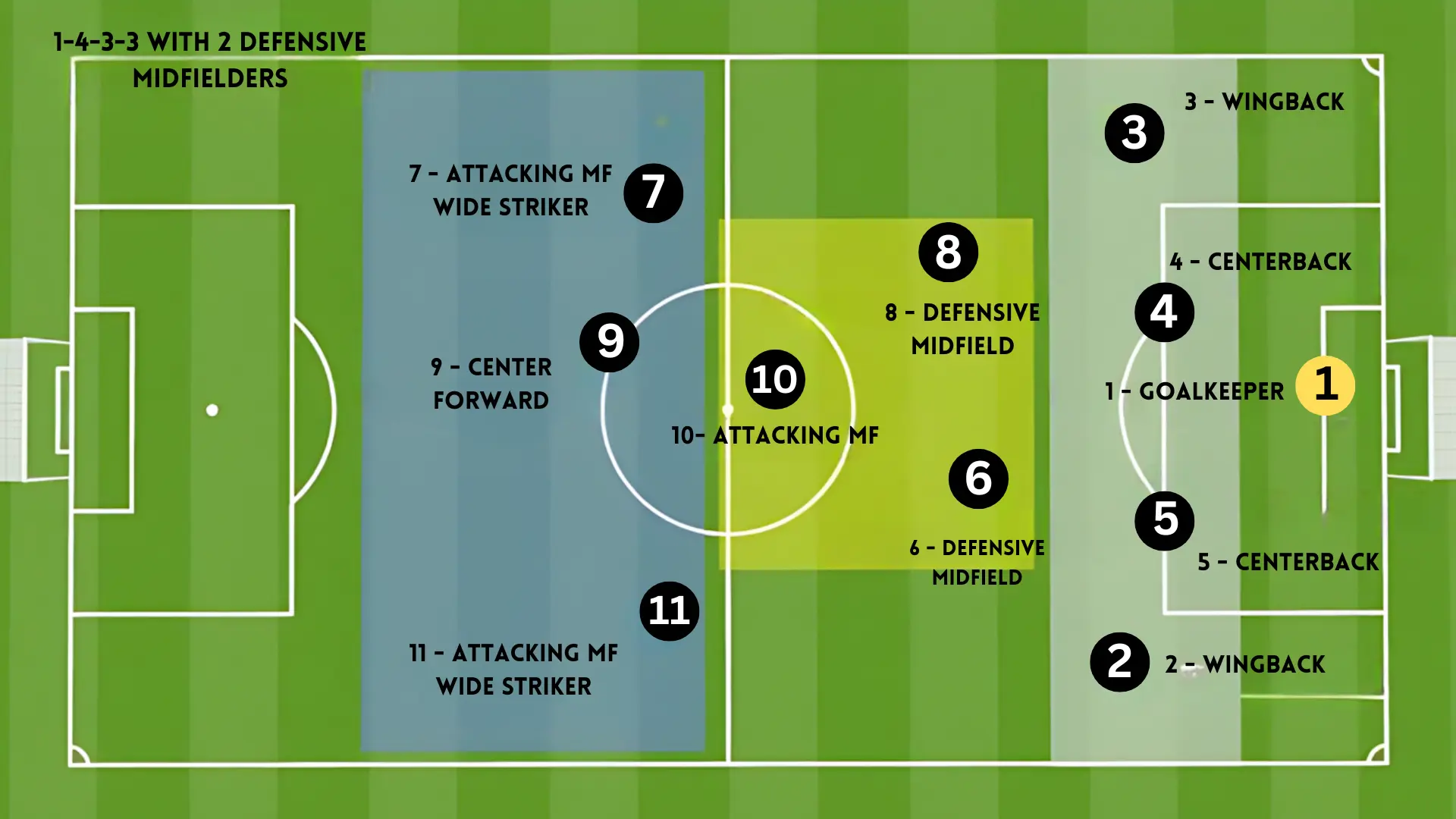
Introduction
Football positions and roles are changing the game of football players And hence there is nothing wrong in pointing it out that football is a diverse game and it has different strategies by which people have specific roles to play in a stadium against any specific team in a match. That is why the functions of such particular football positions are crucial when regarding the game in terms of tactics. What follows in this article is a breakdown of the main formations on the field, the roles and responsibilities associated with each position.
Goalkeeper
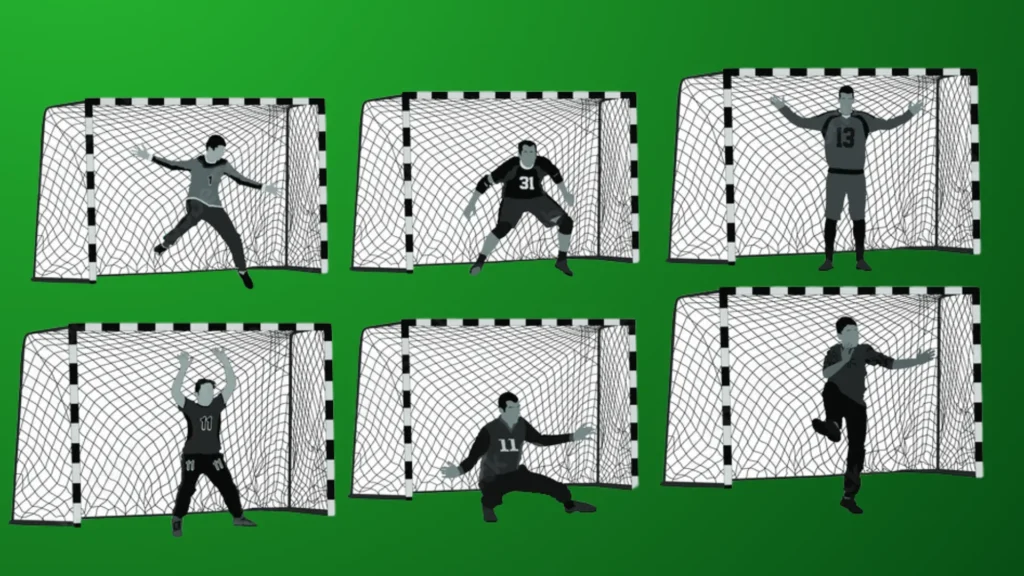
In fact, the last man in defense is the goalkeeper while the only man on the team that can use body part above the wrist to influence the ball in the match is the goalkeeper at the penalty box. Among them their main duty is to ensure they arrest the ball at the posts of the opposite team, and this is also a way of scoring. For instance in goal keeping, that one has to be able to reach out for a ball and respond to a ball swiftly and other things that he does among himself. It also helps to help construct the defensive phase and initiate the offences with the right foot.
Fullback
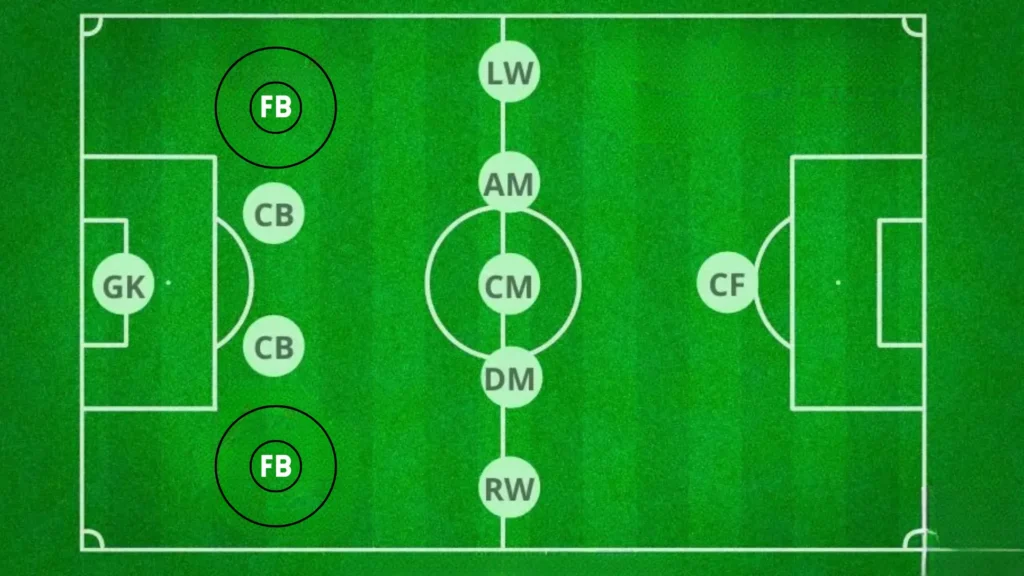
Major tasks are completed in the defending formation, as well as the attacking formation and fullbacks are usually positioned in both sides of the formation. The defensive winger and forwards should be in a position to apply pressure and press, the forwards of the opposite team.
To win the ball and beat the wings each time the passes are made to them, and also to deal with high crosses while at the same time being an added advantage in attack being the forward players of the team with the back four of the opposite team. Over time, fullbacks have been known to be involved deeply in the creation of goals and for this reason must always be involved in the buildup to attacking plays.
Centre-back
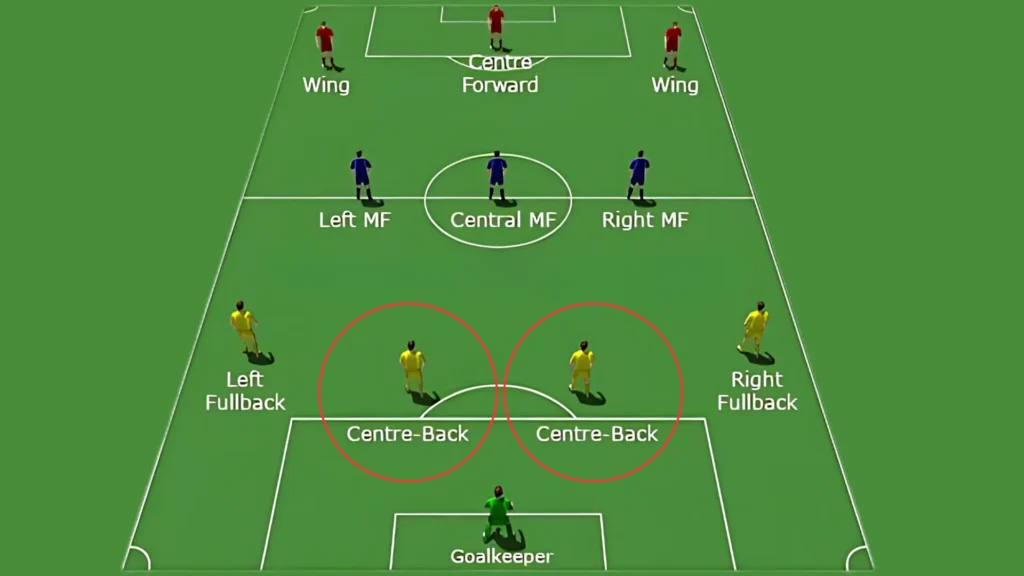
Centre back are usually the man in the middle of defense and their basic role is to defend the post as well as offer balance. These players have to be synchronized in aerial battles, shuttle, pressing, and should not become offre for the forwards of the opposite team to make the completion of the full team. They also in formation making especially of the defensive line and also they assist the formation to be well informed of which area is open. They have analytical ability to perceive the game, to perceive threats which are important in a game to sharpen the defense line.
Sweeper
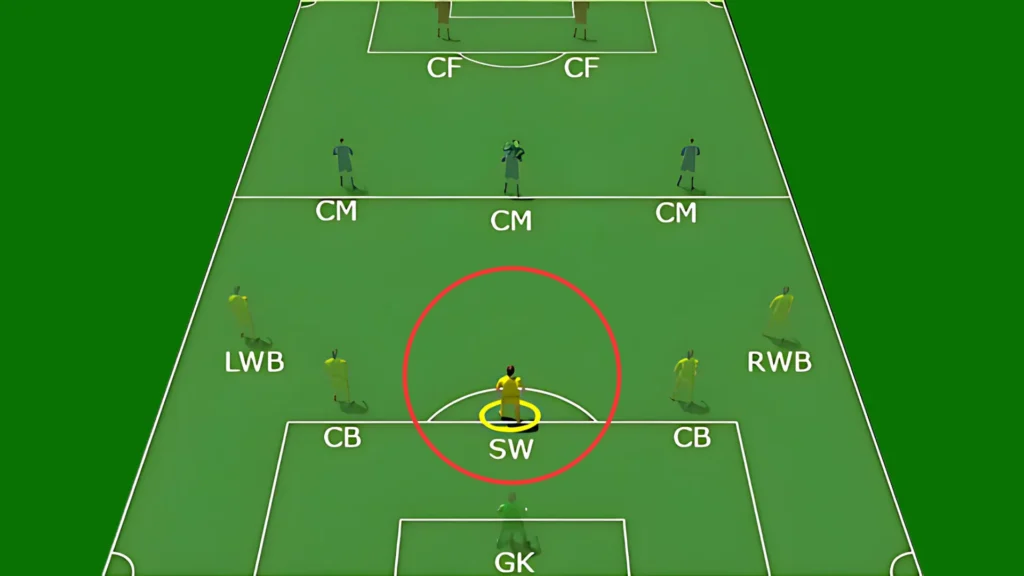
For instance, assuming ‘new’ means closer to midfield, the conventional ‘sweeper’ could utilize the position provided that he is a player posted slightly in advance of two players of central back type. It appears that there are technical strategies that are believed to threaten such zones that may cause traffic jam and protect the rear crew of the guardian staff.
Several of the characteristics of a sweeper are supposed to read the game since as a role, he or she may be in a position to capitalize on any attack within a game, he or she must search for the balls. This may make counters respectable with the notion that they are the only team that defends and should only shoot when they get it right.
Defensive Midfielder
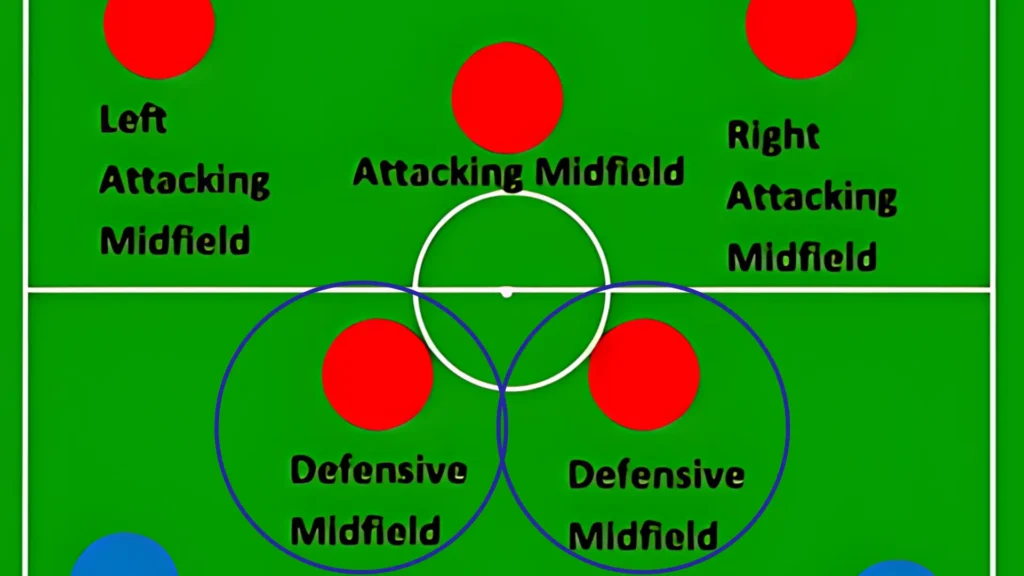
Defensive midfield as performers is helpful in assuming the position of a pivot between the back side of the defense and the forward attack. it has to task of flagging the opponents teams and sticking to the ball when it is booted out of the field of play. For some roles they have to be fit enough to deal with it and to have a good understanding of the spatial field and a precise passing technique to start an attack. It is the secret of ensuring that the forward players of the opposite team are a certain permitted distance from their back line.
Deep-Lying Playmaker

The deep lay maker is nearly akin to the role of the defense minder but in this case, the principal work of the player will be to control the game. You liked them because it was useful for getting into the attacking half of the field and accuracy for forwards which are more likely to be in the middle. Secondly, the deep-lying playmaker is central to the matter of passing since he by tenancy has to distribute the ball and create key passes to move the team from the back formation played to the front formation and vice-versa as well as other other functional roles as a goal scorer.
Central Midfielder
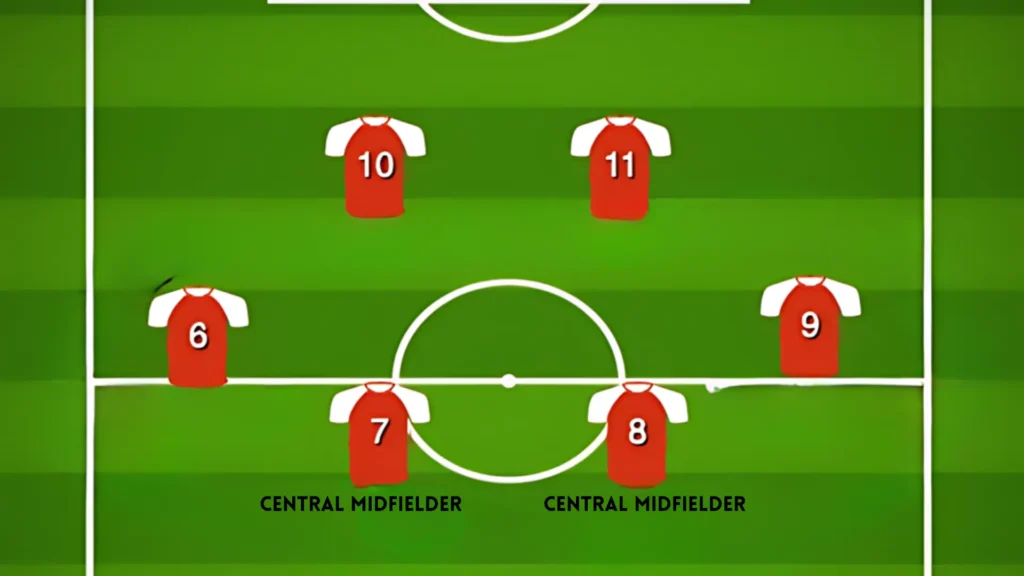
Numbers 8 and 10 are some of the most important roles that any team has to have because they’re usually the players involved in both offense and defense. Sometimes they incorporate themselves into play formation and has to be outstanding in passing, dribbling and orientational skills. They also help with positioning of the back formation and the front formation because most of the central midfielding players are usually found halfway through the field. Such skills as perceiving the game; decision making ability for controlling the ball and searching for space for corner goals.
Attacking Midfielder

This type of players are mostly located farther in the back of the forwards, and major role of such players is to locate the ball and try to score a goal. Someone who has to creatively apply force, technical ability and most importantly good eyesight to penetrate through defensive lines. AM moves the defenders, makes the precise pass and, at times, gets to the right position in which to shoot at the goal. Their role is to connect midfield to the forwards as they try to participate in planning some of these aspects of the team.
Winger
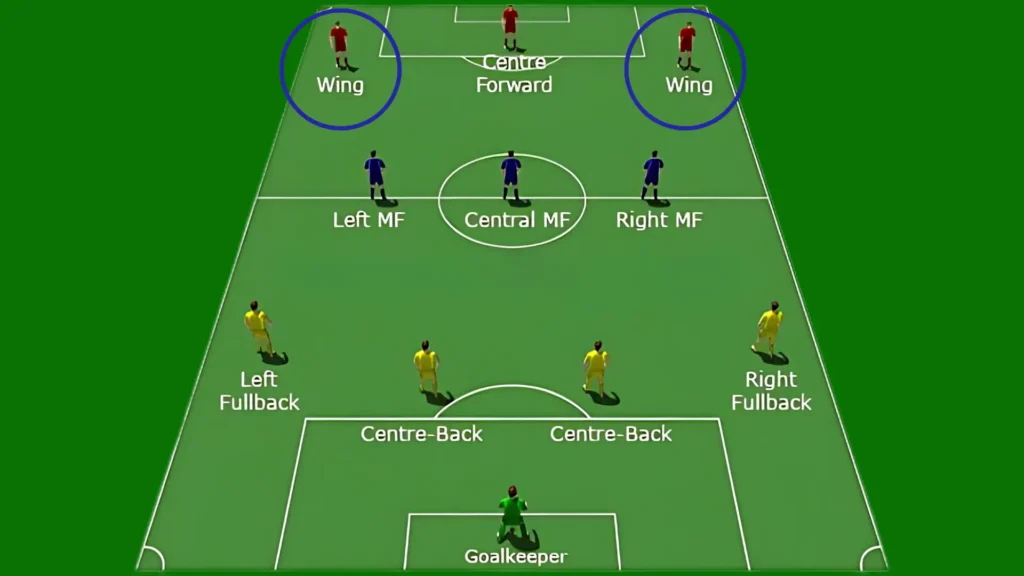
Wingers are opened on the side line they should contribute crossing and bring some aspect to the attacking formation of a team. This is the reason a certain particular player have to be empowered with dribble, speed and the technique of overcoming the tricks which the other group may develop.
In this respect, wingers can be useful in fulfilling the aim of transiting to mid-field area in order to get the ball and score a goal or even come up with an opportunity for the striker’s side. Especially when it comes to team performance they are relevant in both the attacker and the defender players.
Striker

Some people refer to call forwards as strikers because these are particularized for attack, and they are ranked a bit higher than forwards and goal keepers. Opponents therefore posit that created chances play the role of converting them into goals and for this reason there must be some degree of skill with regards to some aspects of the game for instance taking of goals, running, and making runs.
Midfielders specifically need to rough the balls and play with the strikers and they are very helpful in gaining chances of creating goal scorer. The striker can pointing the man of match most of the times and such a person can be in the list of the important players of the team.
Rules
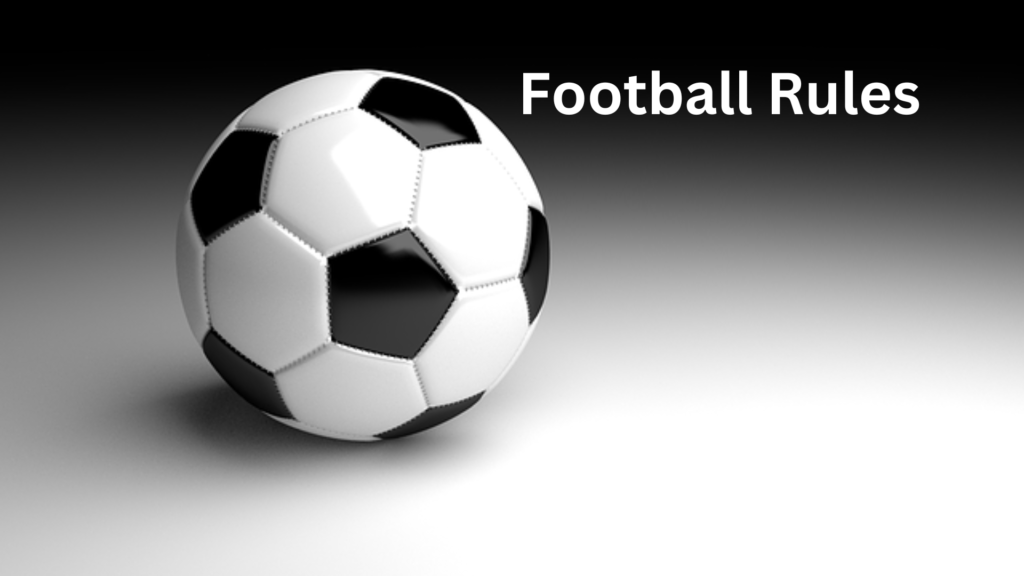
1.Number of Players:
This way, the game ensures the side in the playing field can have a total of eleven players, while a side can only have just a single player in the playing field, being the goal keeper
2.Kickoff:
This match was began with employing a kick off which could be delivered in the center of the play ground
3.Scoring:
This is the case when the major part of the ball is in the major peripheral plane at the back of a goal line and the figure in minor peripheral plane is strictly within the vertical pole and the upper cross bar of the goal.
This is the case when the figure formed by the major part of the ball is in the major peripheral plane at the back of a given goal line, while the figure in the minor peripheral plane is entirely confined to the vertical pole
4.Offside Rule:
The offside rule which include total ban on members of the opposing team from being in front of the second or the third last defender of the other team’s goal at the time the ball has been played to him or her in case of forward passes made by his own side
5.Fouls and Misconduct:
cautioned or trying to kick, shove, or unreasonably bring his or its hand into play (except for the goalkeeper inside the field). Offenses in this case may merit the conferment of a direct free kick, an indirect free kick or a penalty to the other side.
6.Free Kicks:
There are two types of free kicks:
Direct Free Kick: The ball can be kicked directly at the goal.
Indirect Free Kick: The ball must be passed to another player before attempting to score.
7.Penalty Kicks:
Hockey penalty If one or the other team is involved in a foul in the penalty of a particular team then it is given a penalty shot. This is taken shot from 12 yards from the goal post where only the keeper is allowed to move towards.
8.Yellow and Red Cards:
Yellow Card: In fact it refers to any wrongdoing or any violation of the game rule of the game that is being applied.
Red Card: Any two yellow cards which attracts a red card or any offence that is a send-off, the offending player is ushered off the pitch and his team has to be a man.
9.Substitutions:
A team must be allowed to have a maximum of five replacements of players within the players’ bench in one particular match. It also enables the other players to take their positions.
10.Goalkeeper:
However, it must be taken by the goal keeper; this is the only permitted personality to use his or her hand in the penalty area. Save for this area, the goalkeeper has every right a normal player has on the field; just like any other player, he is also subject to the same rule.
11.Additional Time:
In our case stoppage time or injury time, extra time that is provided by the referee once the signal of half time or full time is given depending on maybe a player’s injury or any other reason including substitution.
Conclusion
Still, some idea of the formation of a football team is crucial in order to gauge the strategic complexity of the game. I have explained in previous posts each position is valuable in the team and everyone participates in playing defense as well as the attacking role in the game. That way, both the fans and the players will be in a position to comprehend some of the performance in any given tournaments or game.
People also Ask for
1.What is Number 6 position in football?
Defensive Midfielders are 6 positions in football , and some of the most important players in the team that is mostly involved in the midfield analyzing defense and counter attacking the opponents.
2.What does soccer 11 position?
In soccer, position 11 mostly indicate the left winger /forward player in the field. This player plays in the left side of the attack, and their roles include; speed, dribbling and crossing to create chances. Left winger sometimes come inside to shoot or just pass the ball into box so that his colleagues make the goal.
3.What is the position of 7 and 11 in football?
Sometimes they call Position 7 the right winger. This player plays on the right side, and his or her main role is to unleash the speed, skills in dribbling, and the crossing skills in the team with an aim of getting a goal.
Starting eleven, position 11 normally designates the left winger. This is a player who operates in the left side of the attack like the right winger and his role is to produce cross passes, dribble and shoot or come up with opportunities at the left side of the field.
Also Read: 5-Minute Football Warm-Up Routine

Leave a Reply